Top Photo: Mating common snapping turtles in the spring create hatchlings for the fall (see below).
Snapping turtles have a rough and tumble mating season. The choosing and sorting out of mating partners can be rather violent. But for snapping turtles it’s a necessary part of the process which occurs each spring and summer. Rest comes next for the big males.

Snapping turtles leave the water infrequently and for only a very few good reasons (a basking snapping turtle is not a common sight). Terrestrial trekking is usually to find a fresh, food-stocked pond, mate, or lay eggs. Following the mate, the females do just that, hustle onto land to locate suitable nest digging habitat. Here at the museum that’s typically clay soil just off the main walking path in Explore the Wild or along one of our dirt service roads.

When the eggs hatch (in about 80 days) the young turtles dig their way up through the clay and march off to seek water. Look for young snappers now. But it’s probably not a good idea to pick them up. As lost as they may appear to be, they’re headed in a chosen direction and usually find the water they’re looking for.
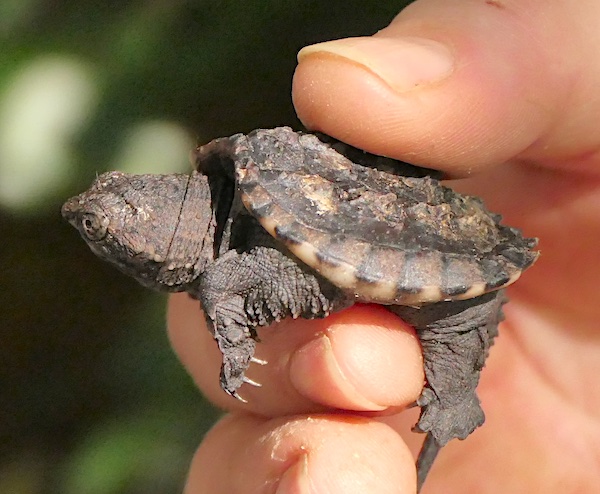
If you see one that may be in danger of being stepped on, flag down a staff member and they’ll take care of whatever needs to be done to help the little traveler.
Elsewhere in your stroll around the campus stop by the wolf enclosure and have a peek at the wolf family, Adeyha, Oak, and their five pups, Cedar, Juniper, Maple, Sassafras, and Tupelo.

And on the Dinosaur Trail, the Ravenel’s stinkhorns are doing fine, along with many other mushrooms. The wet weather and fresh mulch has been pushing up fungi lickety-split throughout the campus.


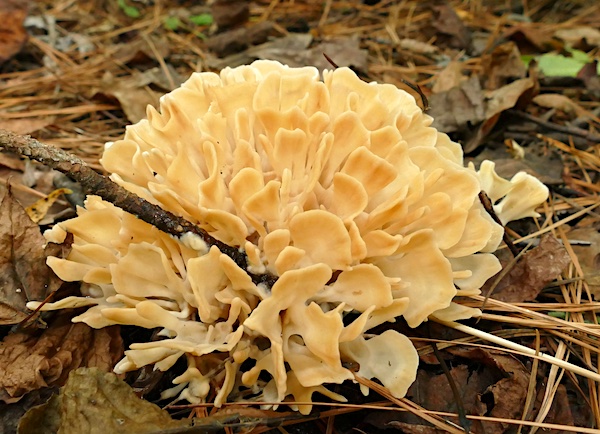
Horticulturist Bobbi Jo from the Butterfly House called me on the radio asking if I’d like to see an interesting caterpillar she discovered while planting fall/winter plants in the Cafe Garden. Heck yeah, of course I would, and sure enough it was indeed an interesting caterpillar. It was the larva of an imperial moth (Eacles imperialis), a large and attractive moth in the Saturniidae family.
The caterpillars can reach 100 mm and be red, green, brown or some shade in between. They feed on a variety of hardwoods, but also have been found on pines. The individual pictured here was making haste beneath a red bay tree. Off to pupate.

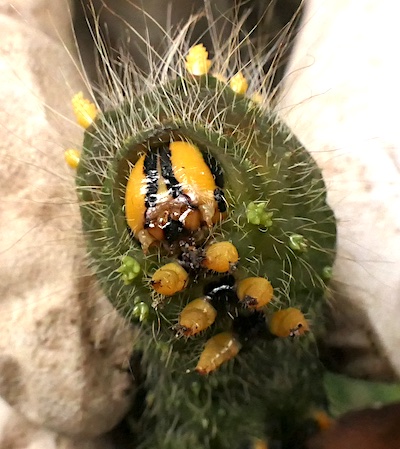
A few migrant arrivals have been spotted recently. October’s their month and sure enough they came through, perhaps a bit earlier than usual. Yellow-bellied sapsucker, butter butt, white-throated sparrow and ruby-crowned kinglet, all made the roster. And, they all showed up on the 9th or 10th of this month following a cold front which brought cool, dry air to the area. I did not see the kinglet, but trusty Exhibits Tech Dakota assures me he spied one of the frenetic, regal little birds.

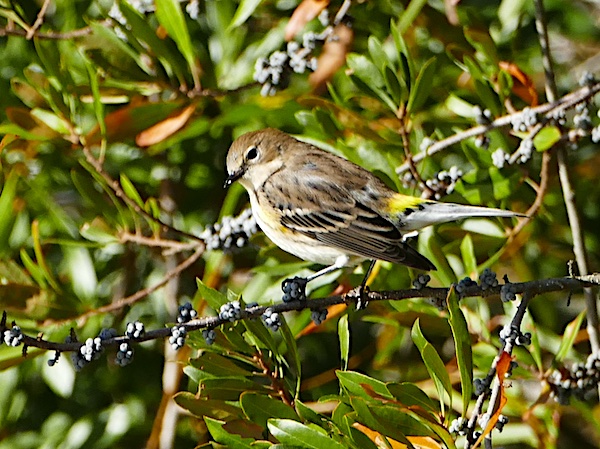
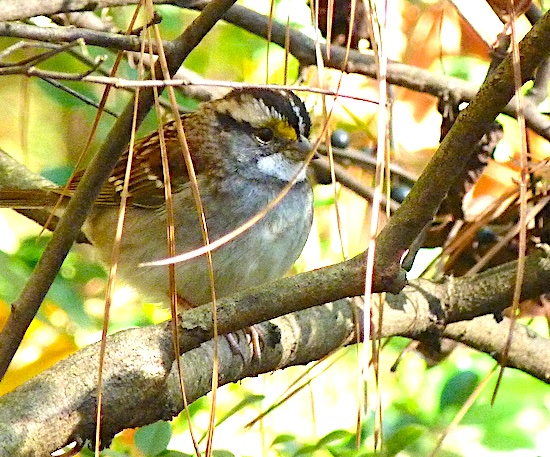

Have fun out there!
Ranger Greg